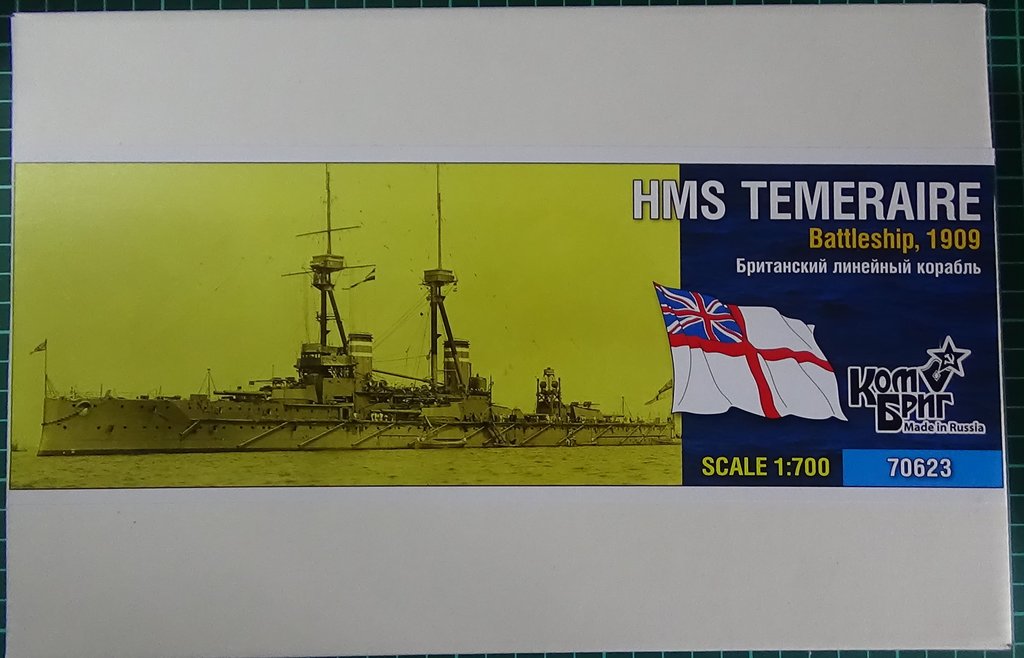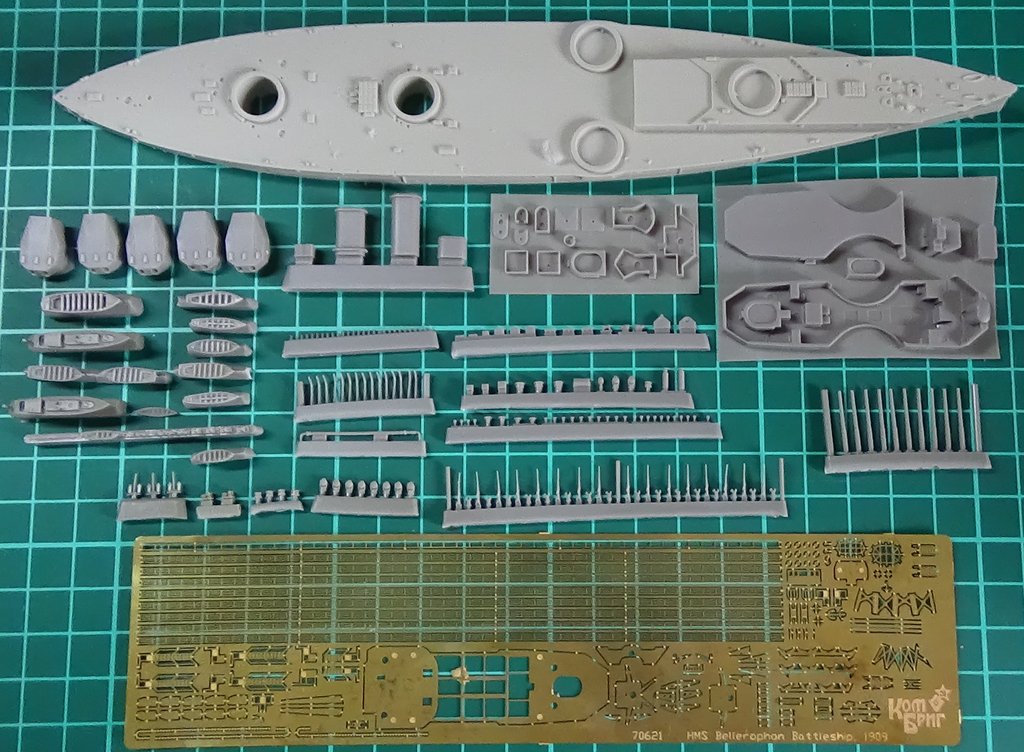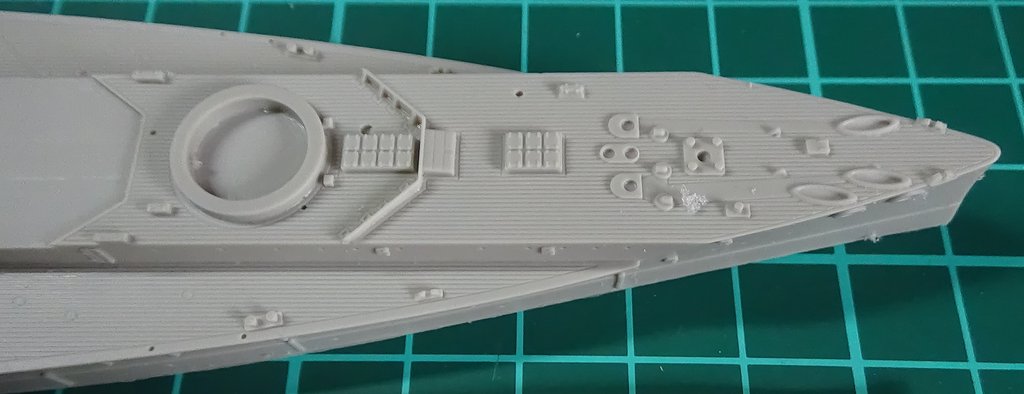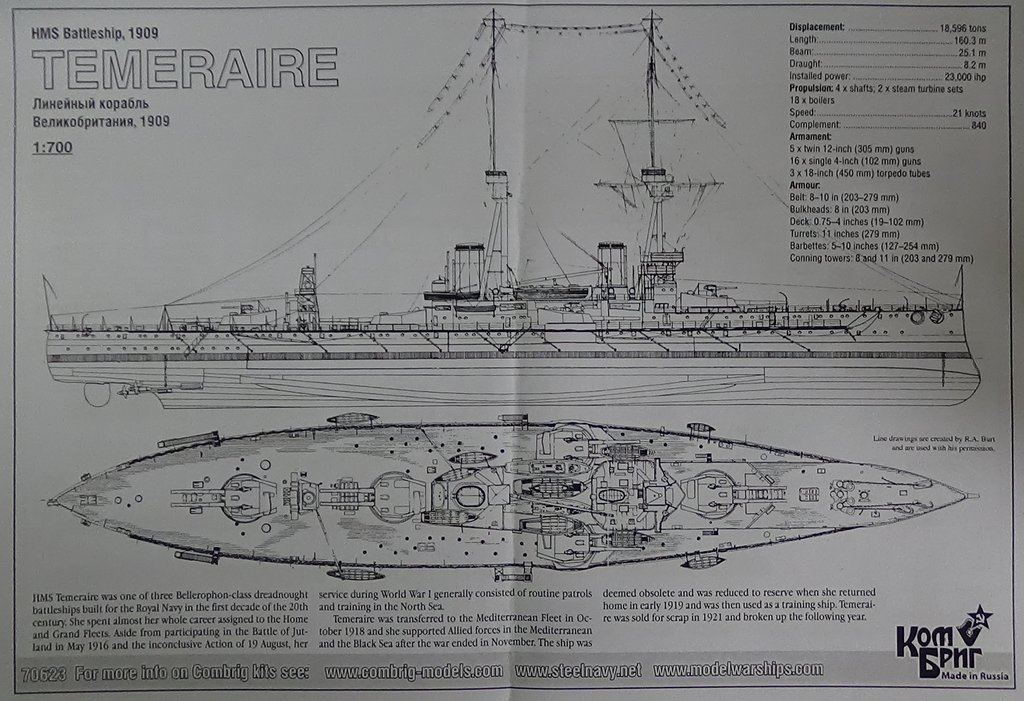Maquette Combrig, résine et PE
Maquette sortie en 2018
Combrig kit, resin and PE
Kit issued in 2018

Les cuirassés de classe Bellerophon forment un groupe de trois cuirassés dreadnought construits pour la Royal Navy au cours de la première décennie du XXe siècle.
Il s'agissait d'un premier développement du HMS Dreadnought, un concept révolutionnaire datant de 1906.
Les navires jumeaux ont passé la majeure partie de leur carrière dans la Home Fleet et la Grand Fleet. Hormis leur participation à la bataille du Jutland en mai 1916 et à l'action non concluante du 19 août quelques mois plus tard, leur service pendant la Première Guerre mondiale a généralement consisté en des patrouilles de routine et des entraînements en mer du Nord.
Fin 1918, le Temeraire et le Superb ont été transférés à la flotte méditerranéenne et ont soutenu les forces alliées en Méditerranée et en mer Noire après la fin de la guerre en novembre. Les Bellerophons sont alors jugés obsolètes et sont réduits à l'état de réserve en 1919, puis utilisés comme navires d'entraînement. Le Superb fut utilisé pour des expériences de tir au canon en 1920, puis devint un navire cible en 1922 avant d'être vendu à la ferraille plus tard dans l'année. Le Bellerophon et le Temeraire furent vendus à la fin de l'année 1921 et démantelés par la suite.
The Bellerophon class battleship was a group of three dreadnought battleships built for the Royal Navy in the first decade of the twentieth century.
They were an early development of the HMS Dreadnought, a revolutionary design dating back to 1906.
The twin ships spent most of their careers in the Home Fleet and the Grand Fleet. Apart from their participation in the Battle of Jutland in May 1916 and the inconclusive action on 19 August a few months later, their service during the First World War generally consisted of routine patrols and training in the North Sea.
By the end of 1918, the Temeraire and Superb were transferred to the Mediterranean fleet and supported the Allied forces in the Mediterranean and Black Sea after the end of the war in November. The Bellerophons were then deemed obsolete and were reduced to reserve status in 1919, then used as training ships. The Superb was used for gunnery experiments in 1920, then became a target ship in 1922 before being sold for scrap later that year. The Bellerophon and Temeraire were sold at the end of 1921 and subsequently dismantled.




_Bruno
Maquette sortie en 2018
Combrig kit, resin and PE
Kit issued in 2018

Les cuirassés de classe Bellerophon forment un groupe de trois cuirassés dreadnought construits pour la Royal Navy au cours de la première décennie du XXe siècle.
Il s'agissait d'un premier développement du HMS Dreadnought, un concept révolutionnaire datant de 1906.
Les navires jumeaux ont passé la majeure partie de leur carrière dans la Home Fleet et la Grand Fleet. Hormis leur participation à la bataille du Jutland en mai 1916 et à l'action non concluante du 19 août quelques mois plus tard, leur service pendant la Première Guerre mondiale a généralement consisté en des patrouilles de routine et des entraînements en mer du Nord.
Fin 1918, le Temeraire et le Superb ont été transférés à la flotte méditerranéenne et ont soutenu les forces alliées en Méditerranée et en mer Noire après la fin de la guerre en novembre. Les Bellerophons sont alors jugés obsolètes et sont réduits à l'état de réserve en 1919, puis utilisés comme navires d'entraînement. Le Superb fut utilisé pour des expériences de tir au canon en 1920, puis devint un navire cible en 1922 avant d'être vendu à la ferraille plus tard dans l'année. Le Bellerophon et le Temeraire furent vendus à la fin de l'année 1921 et démantelés par la suite.
The Bellerophon class battleship was a group of three dreadnought battleships built for the Royal Navy in the first decade of the twentieth century.
They were an early development of the HMS Dreadnought, a revolutionary design dating back to 1906.
The twin ships spent most of their careers in the Home Fleet and the Grand Fleet. Apart from their participation in the Battle of Jutland in May 1916 and the inconclusive action on 19 August a few months later, their service during the First World War generally consisted of routine patrols and training in the North Sea.
By the end of 1918, the Temeraire and Superb were transferred to the Mediterranean fleet and supported the Allied forces in the Mediterranean and Black Sea after the end of the war in November. The Bellerophons were then deemed obsolete and were reduced to reserve status in 1919, then used as training ships. The Superb was used for gunnery experiments in 1920, then became a target ship in 1922 before being sold for scrap later that year. The Bellerophon and Temeraire were sold at the end of 1921 and subsequently dismantled.




_Bruno


